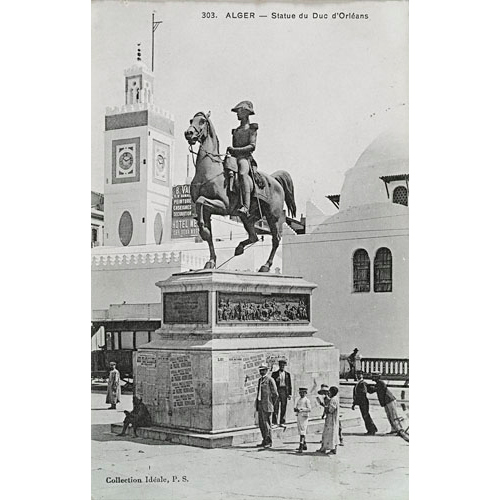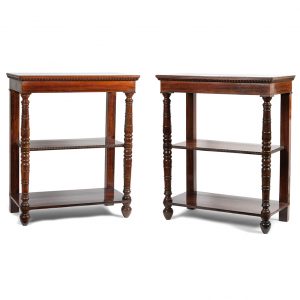Bronze.
Signed "BARYE" incised on the terrace.
Brown patina with slightly green reflections.
Cast by the Barye workshop, circa 1857-1875.
H. 37.3 x L. 32 x D. 10.8 cm.
Collection of a Barye lover, Paris.
This is a reduction of the equestrian statue inaugurated in Algiers in 1845 (ill. 1-2). Developed between 1842 and 1844 by the Italian sculptor Carlo Marochetti and melted by the Parisian Soyer, it responded to a request from the African army and the Algerian population to pay homage to the Duke of Orleans who died on July 13, 1842 in a traffic accident in Neuilly-sur-Seine. The statue testifies to the popularity of the prince who had distinguished himself from 1835 in the conquest of Algeria. The bas-reliefs on the sides represent the capture of the citadel of Antwerp in 1832 and the passage of the Mouzaia pass during his final stay in Algeria in 1840. It was erected on the Place du Gouvernement in Algiers, next to the mosque de la Pêcherie in 1845. After the independence of Algeria in 1963, it was dismantled, repatriated to France and stored at the Château de Vincennes. In 1974, the mayor of Neuilly Achille Peretti decided to install the statue at the Chauveau roundabout, renamed Place du Duc d'Orléans. The set was inaugurated on February 13, 1981. An identical statue can be found at the château d'Eu.
Ferdinand-Philippe played an important role in Barye's career. Thanks to the commission of an important table top, he allowed the beginning artist to establish himself as the romantic sculptor of his generation. This equestrian statue is a posthumous tribute by the sculptor to his patron. Queen Marie-Amélie had a copy in her study at the Tuileries, opposite her desk, visible in the watercolor by James Robert from 1849 (ill. 3).
- An antique bronze cast before 1902 in brown-green patina is currently at the Louvre Museum (Legs Thomy-Thiéry, 1902, inv. OA 5736).
- A bronze cast with red reflections sold at Sotheby's London, July 2, 2013, lot 136.
Literature
M. Poletti and A. Richarme, Barye. Catalog raisonné of sculptures, Paris, 2000, pp. 65-66, No. F3.














